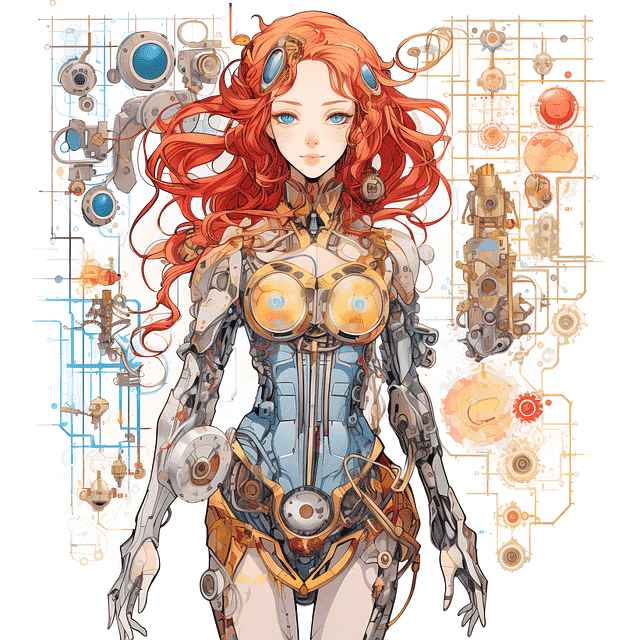It’s been over a year since ChatGPT launched. People were amazed by its natural language skills. But now, other AI like Google’s Bard and Gemini are making waves. New players like Anthropic are entering too. OpenAI needs to act fast to stay ahead.
As we look ahead to GPT-5, excitement grows. We’ll explore what we might expect from it, based on previous versions like GPT-4 and advancements in AI. Remember, these are predictions, so the future remains uncertain.
GPT-5 is anticipated to build on the progress of its predecessors. It may bring even more impressive capabilities to the table.
We’re in a time where growth of technology is very rapid. The possibilities for GPT-5 are extensive, but we can’t say for sure what it will bring in our future.
The tech community is buzzing with speculation about GPT-5. People are anxious to see what it can do.
As we delve into discussions about GPT-5, we’re venturing into a realm of exciting potential.It’s important to approach our expectations with a sense of curiosity and openness. GPT-5 could surprise us in many ways.
GPT-5
GPT-5 is the newest version of a smart computer program made by OpenAI. It’s like a really smart robot that can understand and make human-like text. It learns from lots of information on the internet. GPT models are super important in making computers understand and talk like people.
GPT-5 is designed to understand and create text that looks like what a person would write. GPT models have become very popular because they set new standards for how well computers can understand and generate language.
GPT-5 makes sentences shorter and easier to understand. It uses simple words and language to be clear. It changes up how sentences are built and uses different grammar and punctuation. It talks like a friend, not a robot. It uses words like “I” and “you” to feel more personal. It uses words like “can’t” instead of “cannot” to sound more natural.
GPT-5 avoids using too many complicated words or technical terms. It wants everyone to understand. It shows feelings like happiness or sadness to connect with people. It asks questions and responds to answers to feel like a real conversation.
GPT-5 tries to keep things interesting by not saying the same thing over and over. It uses words like “first,” “next,” and “finally” to keep the story moving. It tells stories that feel real, like talking to a friend.
GPT-5 aims to be easy to read and understand, scoring high on readability tests. It stays away from using language that’s too hard. It writes in a way that feels active and alive.
GPT-5 is all about making language simple and friendly, so everyone can understand and enjoy it.
History of GPT:
GPT-1
In 2018, OpenAI unveiled GPT-1, a model designed to understand language better. It used a transformer design to improve how it understood natural language. This model was shown in a paper called “Improving Language Understanding by Generative Pre-Training.” However, it wasn’t made available to the public.
GPT-2
OpenAI launched GPT-2, a big step forward in writing tech. It makes short texts better. Anyone can try it out. This helps lots of people learn about machine learning. GPT-2 writes smoother, simpler, and more real. It’s like chatting with a friend.
GPT-3
ChatGPT, launched in 2020 with GPT-3, amazed users with its 100x parameter increase from GPT-2. This upgrade led to longer, more coherent text, enhancing performance across tasks. ChatGPT, a conversational variant, quickly gained 100 million users in two months, showcasing its human-like text generation capabilities.
GPT-4
GPT-4 is the latest AI, smarter than before. It understands better and talks more like us. It learns from lots of words and gets better at chatting. It knows more facts and is careful not to be mean. People use it for many things, like chatting or writing. OpenAI made GPT-4 Turbo with Vision in 2023, adding new stuff. You can learn more about it in an article about GPT-4. GPT-4 helps us talk and write better, making life easier.
When will GPT-5 be released?
GPT-5’s release date is uncertain. Work has started, but no one knows when it will be ready.Looking at how GPT-4 was developed, it took over two years from start to finish.
So, if GPT-5 follows a similar timeline, it might not be out until the end of 2025.
But, OpenAI might improve GPT-4 in the meantime, maybe with a smaller update like GPT-4.5.
Features in GPT-5
In the future, GPT-5 will likely have better reasoning skills and be able to understand videos. The OpenAI team is working on these improvements. They want to make GPT-5 smarter and able to process more information. This could make it better at understanding and responding to questions. GPT-5 might be able to watch videos and learn from them, which would be a big step forward.
Parameter size
Future Model Sizes: GPT-4’s parameters are unknown, but it’s speculated around 1.5 trillion. GPT-5 might push boundaries further. Expect even larger, more capable models in the future.
Enhancing AI Communication with Video Integration
GPT-5 can upgrade GPT-4’s abilities and add new features like video integration. This shift will make AI interactions more natural and versatile. Google’s Gemini model already explores this idea, so OpenAI needs to innovate. With video, GPT-5 will revolutionize how we communicate with AI, making it more engaging and immersive for users.

Transitioning to Autonomous Agents
GPT-powered apps are evolving into fully autonomous agents. OpenAI’s integration with third-party services makes this possible. Custom GPTs have been introduced, and this trend will continue.
With this feature, GPT-5 can connect to different services and perform tasks without human oversight. For example, it could buy groceries based on our preferences. This advancement simplifies our lives and makes daily tasks easier.

Advancements in GPT Technology
GPT-powered apps are becoming fully autonomous agents, simplifying tasks. OpenAI’s integration with other services enables this. Custom GPTs have been introduced, and more are expected.
This allows GPT-5 to connect to services and complete tasks without human input. For instance, it could handle grocery shopping based on our preferences. This progress aims to streamline everyday activities.
Improving Accuracy: GPT Models’ Evolution
GPT models keep getting better, understanding and responding more accurately. GPT-4 is 40% better than GPT-3, so GPT-5 should keep improving. It will have more data and types of data for training.
This means fewer mistakes and better conversations. GPT-5 will make interactions more reliable and natural.
Enhanced Context Understanding
GPT-5, with its broader data intake, is set to grasp more extensive text contexts, aiding in producing coherent and relevant responses. This advancement promises improved communication by accommodating larger information chunks for processing and understanding.
Democratizing AI Access
Accessing newer AI models, like GPT-4 or GPT-3.5, could become cheaper over time. This means more people can use them. When GPT-5 launches, GPT-4 might become more affordable too.
This could spark innovation as more developers can use advanced AI. With cheaper access, GPT models might get better at complex tasks like coding or research. This could benefit many applications.
Conclusion
We’re excited for GPT-5 details, but now we’re guessing. We might get small updates like GPT-4.5 first. GPT series changes keep us interested, showing AI’s endless possibilities. We wait eagerly for new info but remember, it’s just guesses for now. GPT-5 might come later, maybe after GPT-4.5. AI’s growth fascinates us, imagining all the things it can do.
Also Read: Gemini AI Licensing: Know Fantastic Apple, Google’s Sensational Discussion

